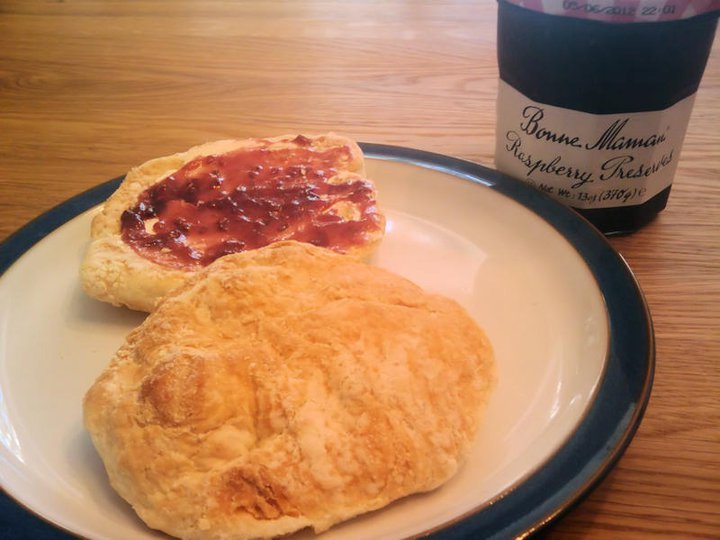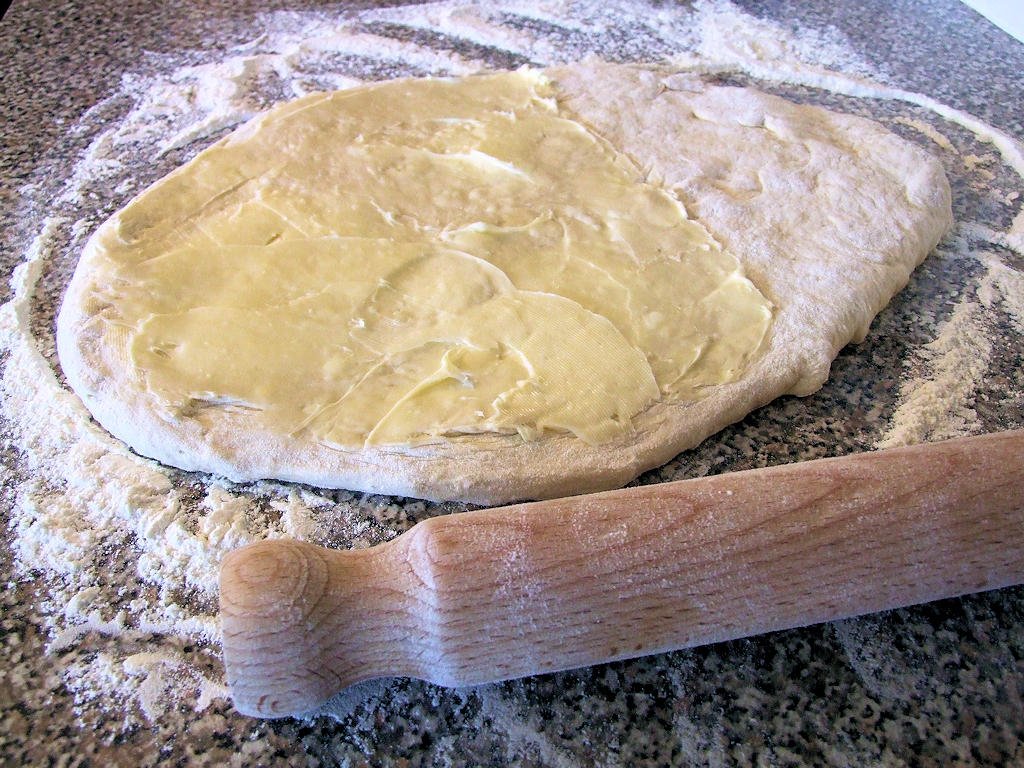Rowies, Butteries, or Aberdeen rolls are savoury bread rolls, similar to a flattened croissant, but far superior, though maybe ‘slightly’ more unhealthy. There is no real record of their history, but one thought is because of their high-fat content they would have been suitable for fisherman to take on longer journeys at sea, but even onshore they can help give your cardioid-vascular system a shock on a cold, wet Aberdeen morning. Traditional rowies are made using lard, but most commercial bakers now use vegetable oil, which doesn’t taste as good.
The different names for rowies was probably related to different parts of Aberdeen, Aberdeenshire, Banffshire and Kincardineshire, but over time they are now used synonymously.
There are basically two types of butteries, though their recipes are the same. There is the salty, slightly crisp variety and the soft, chewy ones, but you usually have to go to different bakers to find each type. The difference comes down to the method of making them. For the crispy variety some of the fat is left in small lumps rather than working it in completely which causes the lumps to effectively fry the surrounding dough. The secret is to know when to stop working the dough, which apparently is an art as slightly too much will create a flat cake instead of a slightly risen buttery.
I haven’t had a rowie in over a year now, and I feel that I will have to try and make some soon. Here’s the recipe I will be using.
Butteries Recipe Ingredients
- 1lb (450g) strong plain bread flour
- 6oz (170g) butter
- 6oz (170g) lard
- 1 tsp of salt
- 2 tsp sugar
- 1 tbsp dried yeast
- 1/4 pint (120ml) tepid water
How to make Rowies
First mix the sugar, half the water and the yeast together in a bowl and set aside for the yeast to activate. Sieve the flour and salt into a bowl and then add the yeast. Mix together, adding more water if required to make a smooth dough then kneed for about 5 mins. Place the dough back in the bowl, cover and leave to rise until it has doubled in size, approx 1 hour.
Kneed the dough again and roll it out on a floured surface. Cream the butter and the lard together and then spread a third of it over the dough and sprinkle with flour. Fold the dough into three, roll it out again, spread another third of the fat mixture and then repeat once more.
Roll the dough quite thinly and cut into 16 equal sized squares. Shape each square into a flattened round, but be careful not to over handle the dough. Place the rounds on a baking tray and leave to rise for approx 40mins.
Bake the rolls at 450F (230C) for about 15-20 minutes until crispy and golden.
Serve hot or cold with lashings of butter and / or raspberry jam.






2 comments
How many of these could I possibly eat prior to having a heart attack? I am confident that I would not be able to stop at only one.
I’ve made this flake pastry, but have used solely butter in the rolling out and ‘sandwiched’ it into thirds 4 or 5 times, moving it a quarter turn each time. Jam is placed in the center and egg is used to glue 2 sides catty-corner in the middle, resulting in a tasty pastry you can sweeten up with the addition of a 10x glaze.